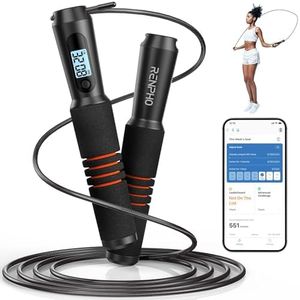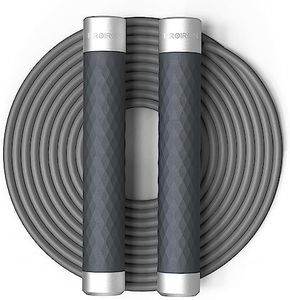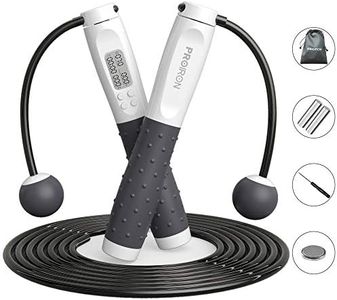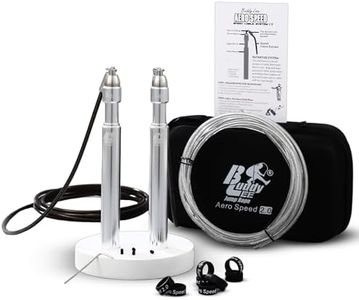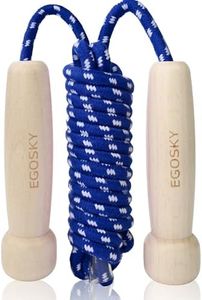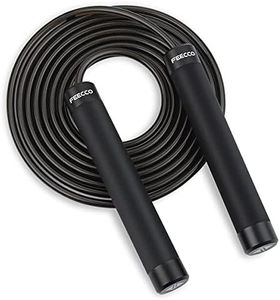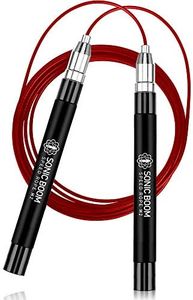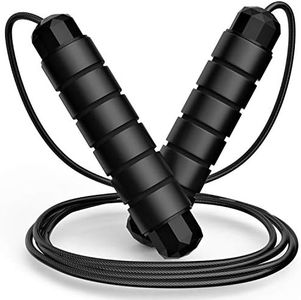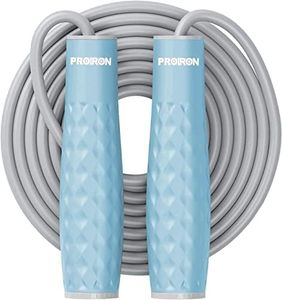We Use CookiesWe use cookies to enhance the security, performance,
functionality and for analytical and promotional activities. By continuing to browse this site you
are agreeing to our privacy policy
10 Best Jump Ropes
From leading brands and best sellers available on the web.Buying Guide for the Best Jump Ropes
Choosing the right jump rope can make a big difference in your workout experience, whether you're looking for a fun way to stay active, improve coordination, or add a cardio element to your fitness routine. The ideal jump rope should feel comfortable in your hands, be the right length for your height and skill level, and be made of a material that matches how and where you plan to use it. By understanding key features, you can select a jump rope that will help you reach your fitness goals and keep you motivated.Rope LengthRope length refers to the total length of the jump rope from handle to handle. This is important because the right length ensures smooth swinging and reduces chances of tripping. If the rope is too short, it may catch on your feet; too long and it’s harder to control and may hit the ground excessively. Typically, for beginners, standing on the middle of the rope and pulling the handles up—should reach roughly your armpits—is a good check. Adjustable ropes or ropes that come in different sizes can help you find a better fit. Your height and jumping style should guide your choice; more advanced users may prefer slightly shorter ropes for speed and efficiency.
Handle Type and GripThe handles are where you hold the rope, and their design affects both comfort and performance. Handles come in different materials and shapes, some with foam or rubber grips and some made from lightweight plastic or metal. A comfortable, non-slip grip is important for longer sessions or sweaty hands. For tricks or fast speed work, lighter, streamlined handles are often preferred, while general fitness users may like a bit more padding for comfort. Choosing a handle that feels secure and natural in your hand is key, and if you plan on long jump sessions, look for ergonomic designs and cushioned grips.
Rope MaterialThe material of the rope impacts its weight, speed, and durability. Common materials are PVC (plastic), leather, beaded (plastic segments), steel cables (usually coated), and fabric. Lightweight plastic ropes are versatile for beginners, while beaded ropes offer better feedback and visibility for rhythmic jumping. Steel-cable ropes are best for speed work but usually suited for experienced users. Leather ropes are durable and provide a traditional feel, while fabric ropes are soft and less likely to hurt if they hit you, making them suitable for kids. Consider where and how you plan to use the rope—outdoors, indoors, for tricks, or fast skipping—to guide your material choice.
Weight and ThicknessThe weight and thickness of a jump rope affect how fast it swings and how much effort it requires to turn. Heavier ropes (sometimes called weighted ropes) build more strength and are excellent for fitness and endurance workouts, while lightweight ropes are better for quick, high-speed skipping and tricks. Thicker ropes typically swing slower and are more beginner-friendly due to their control, while thinner ropes allow for faster spins but require more technique. Think about your main goal—whether it's cardio, strength, speed, or coordination—as that will determine which combination of weight and thickness will suit you best.
Rotation MechanismThe rotation mechanism is what connects the rope to the handles and determines how smoothly the rope turns. Ball bearings are often used to ensure a smooth, fast, and tangle-free movement, especially at high speeds. Simpler ropes may have a basic plastic or metal attachment, which can work well for casual use but may catch or twist during fast rotations. If you plan to do a lot of speed work or double unders, a high-quality rotation mechanism with ball bearings can make skipping easier and reduce wrist fatigue. For general users or beginners, a basic mechanism is typically sufficient, but those wanting a smoother or faster rope should look for this feature.
